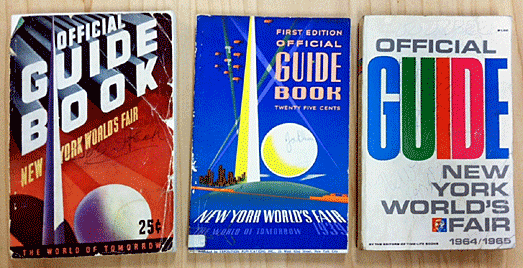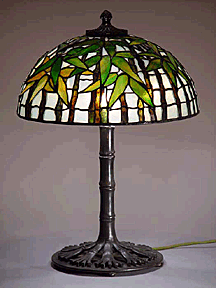|
The Queen of Queens
by Bob Brooke
The Queens Museum resides in the former New York City Building,
originally the New York City Pavilion at the 1939 World’s Fair. Being
directly adjacent to the great icons of the Fair—the Trylon and
Perisphere—it was one of the few buildings created for the Fair intended
to be permanent. Now it’s the only surviving building from the 1939/40
Fair.

After the World’s Fair, the building became a recreation center for the
newly created Flushing Meadows Corona Park. The north side of the
building, now the Queens Museum, housed a roller rink and the south side
offered an ice rink, as it still does today.
To the right of the Museum is New York’s Grand Central Parkway,
originally planned by Robert Moses as a tree-lined roadway providing
easy access to Jones Beach. Back in 1939, it stood opposite the famed
Trylon and Perisphere, symbols of the future world of the Fair.
 Architect,
Aymer Embury III, one of Robert Moses’ favorite designers and the
designer of the Central Park Zoo and the Tri-Borough Bridge, designed
the building in a modern classical style, which was perhaps a little
ironic given that the theme of the 1939 Fair was the “World of
Tomorrow.” The exterior of the building featured colonnades behind which
stood vast expanses of glass brick punctuated by limestone pilasters
trimmed in dark polished granite, and solid corner blocks of limestone. Architect,
Aymer Embury III, one of Robert Moses’ favorite designers and the
designer of the Central Park Zoo and the Tri-Borough Bridge, designed
the building in a modern classical style, which was perhaps a little
ironic given that the theme of the 1939 Fair was the “World of
Tomorrow.” The exterior of the building featured colonnades behind which
stood vast expanses of glass brick punctuated by limestone pilasters
trimmed in dark polished granite, and solid corner blocks of limestone.
The museum building has had an illustrious history. After serving as one
of the primary buildings at the Fair, it went on to become the first
home of the General Assembly of the newly formed United Nations after
World War II. Until the site of the UN’s current home in Manhattan
became available, Flushing Meadows Corona Park was being considered as
the organization’s future permanent headquarters site. During the early
post-war years, almost every world leader spent time in the New York
City Building, and they made many important decisions, including the
partition of Palestine and the creation of UNICEF.

In preparation for the 1964 World’s Fair, architect Daniel Chait once again
renovated the New York City Building. He added a scalloped entry awning
to the east façade and concrete brise-soleil used to cover all of the
areas of glass brick. Again the building housed the New York City
Pavilion, in which was the Panorama of the City of New York, which
remains in the building and open to the public as part of the Museum’s
collection.

 As in 1939, the New York City Building, was at the center of the 1964
World’s Fair. Today, it stands adjacent to the 140 foot high steel Unisphere,
the symbol of the 1964 Fair’s theme of “Peace through Understanding.”
After the Fair, the Panorama remained open to the public and the south
side of the building returned to being an ice rink. As in 1939, the New York City Building, was at the center of the 1964
World’s Fair. Today, it stands adjacent to the 140 foot high steel Unisphere,
the symbol of the 1964 Fair’s theme of “Peace through Understanding.”
After the Fair, the Panorama remained open to the public and the south
side of the building returned to being an ice rink.
In 1972, the City of New York gave the north side of the New York
City Building to the Queens Museum of Art, then known as the Queens
Center for Art and Culture. In 1994, Rafael Viñoly significantly
redesigned the existing space within the building, creating dramatic
exhibition galleries. Recently, the Museum undertook a second
renovation, doubling its size.

 Besides its temporary exhibitions, the Queens Museum features two
collections that reflect on the history of the area in which it’s
located—Corona, the home of Tiffany Studios and the site of both the
1939 and 1964 New York World’s Fairs. Besides its temporary exhibitions, the Queens Museum features two
collections that reflect on the history of the area in which it’s
located—Corona, the home of Tiffany Studios and the site of both the
1939 and 1964 New York World’s Fairs.
Since
1995 the Queens Museum of Art and the Neustadt Collection of Tiffany
Glass have partnered to present and promote the art work of Louis C.
Tiffany in the New York metropolitan area.
Tiffany: The Glass is an exhibition organized by The Neustadt
Collection of Tiffany Glass exploring the colors, patterns, textures
and types of glass made for and used by Tiffany Studios. The
installation includes two windows, eleven lampshades, and more than
two hundred examples of flat glass and is on view in the Neustadt
Gallery at the Queens Museum of Art.

 Louis C. Tiffany was a prolific artist, decorator and designer but
he’s best known for the leaded-glass windows, lamps, and mosaics
made under his direction. This exhibition highlights some of the
most commonly used types of opalescent glass produced at the Tiffany
Furnaces in Corona, Queens, just blocks from the Queens Museum, as
well as glass purchased from commercial glass manufacturers,
including the Opalescent Glass Works in Kokomo, Indiana. The windows
and lamps on display demonstrate some of the ways in which these
distinctive materials were used to replicate the details of the
natural world. This installation is the first of its kind and
focuses on the beauty and diversity of the material used by Tiffany
and his craftsmen to achieve an extraordinary range of effects in
the depiction of flora, figures, and ornamental designs. Louis C. Tiffany was a prolific artist, decorator and designer but
he’s best known for the leaded-glass windows, lamps, and mosaics
made under his direction. This exhibition highlights some of the
most commonly used types of opalescent glass produced at the Tiffany
Furnaces in Corona, Queens, just blocks from the Queens Museum, as
well as glass purchased from commercial glass manufacturers,
including the Opalescent Glass Works in Kokomo, Indiana. The windows
and lamps on display demonstrate some of the ways in which these
distinctive materials were used to replicate the details of the
natural world. This installation is the first of its kind and
focuses on the beauty and diversity of the material used by Tiffany
and his craftsmen to achieve an extraordinary range of effects in
the depiction of flora, figures, and ornamental designs.

The
Museum also has an impressive collection of objects from both
World’s Fairs. In fact, it’s the only place where such a large
collection has been amassed and exhibited. Through souvenirs, maps,
and other memorabilia, visitors can experience the Fairs once again.
Read more about souvenirs from the 1939 NY World's Fair.
< Back
to Home Page
Next Article >
|
